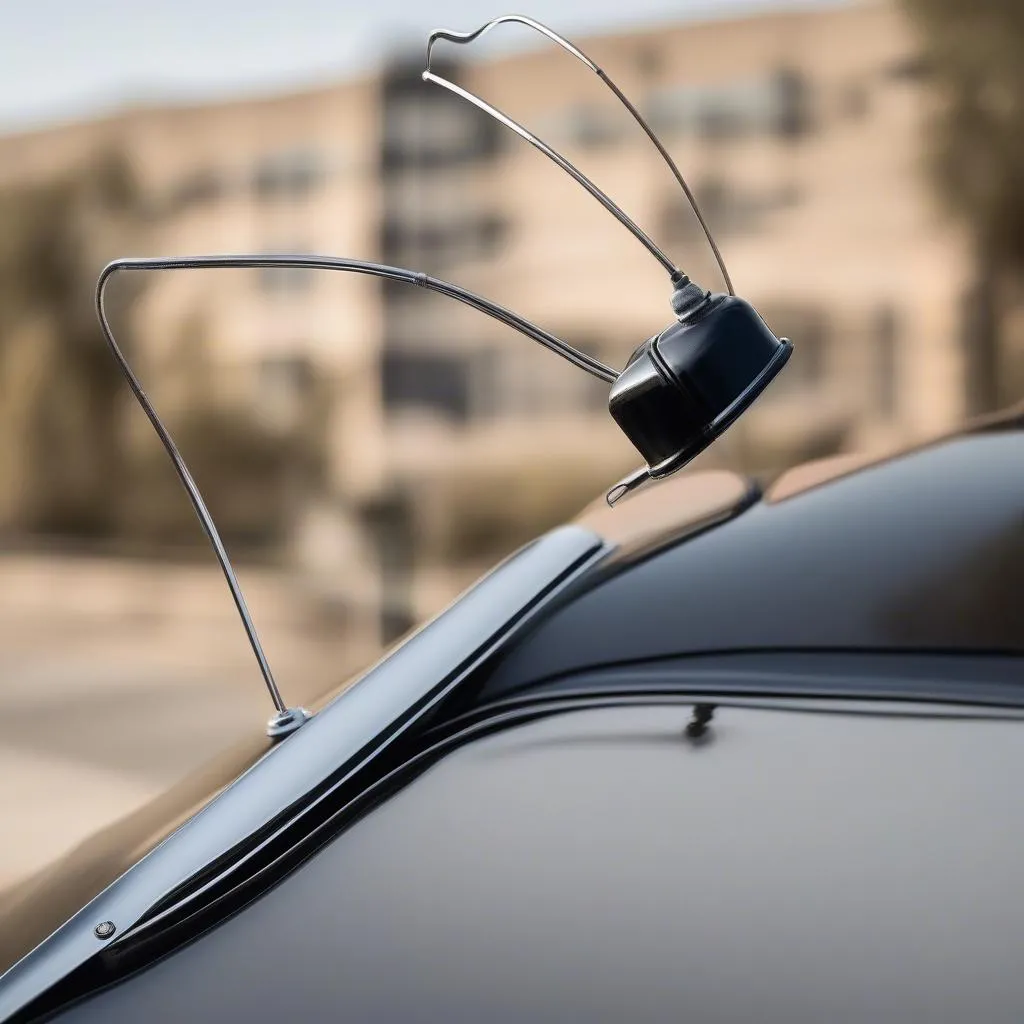Have you ever looked at a classic car and thought, “Wow, that antenna is just…cool“? There’s something undeniably charming about Vintage Car Antennas. They’re not just functional, they’re a statement piece. They tell a story about a bygone era when driving was an adventure, not just a commute. But how do you choose the right vintage car antenna for your classic vehicle?
The Significance of a Vintage Car Antenna:
The antenna, a humble piece of metal, played a crucial role in shaping the automotive landscape. In the early days of radio, it was the key to connecting with the world, to news, music, and entertainment. It was a symbol of progress, of being connected to the wider world while on the road. For many drivers, it was more than just a functional piece, it was a statement of style, individuality, and a connection to their passion for classic cars.
Understanding Vintage Car Antennas:
Types of Vintage Car Antennas:
- Whip Antennas: These are the most common type of vintage car antenna. They’re long, thin, and flexible, usually made of metal or fiberglass. Whip antennas are often telescopic, meaning they can be extended or retracted.
- Stubby Antennas: These are shorter and more compact than whip antennas. They are often found on cars from the 1950s and 1960s.
- Power Antennas: These antennas are electric and can be extended and retracted with the push of a button. Power antennas became popular in the 1960s and 1970s.
Choosing the Right Vintage Car Antenna:
- Compatibility: The first thing to consider is compatibility. Make sure the antenna is compatible with your car’s radio and mounting system.
- Length: If you’re going for a classic look, a longer whip antenna is a good choice. But if you’re concerned about space or visibility, a stubby antenna might be a better option.
- Materials: Vintage car antennas are typically made of metal or fiberglass. Metal antennas are more durable, but fiberglass antennas are lighter and less likely to rust.
- Style: Vintage car antennas come in a variety of styles, from simple and functional to elaborate and decorative. Choose a style that complements your car’s aesthetic.
Fun Fact: Did you know that the first car radio antenna was invented in 1920 by a German engineer named Hans Bredow? He realized that the car itself could act as an antenna, but the radio signal was weak. His solution was to create a long wire that was attached to the car’s body and extended out the back, much like the whip antennas we see on vintage cars today.
How to Install a Vintage Car Antenna:
Installing a vintage car antenna is a relatively simple process, but it’s important to be careful not to damage your car’s paint.
- Preparation: Before you begin, make sure you have the right tools and supplies. You’ll need a screwdriver, pliers, and a drill.
- Remove the Old Antenna: If your car has a current antenna, carefully remove it. Be sure to note the location of the antenna mount and how it’s secured.
- Install the New Antenna: Once the old antenna is removed, align the new antenna with the mounting hole and secure it with the mounting screws. Make sure the antenna is securely attached.
Tip: If you’re not comfortable installing the antenna yourself, take it to a professional.
Frequently Asked Questions about Vintage Car Antennas:
Q: Can I use a modern antenna on my vintage car?
A: It is possible to use a modern antenna on a vintage car, but you may need to modify the mounting system. Additionally, a modern antenna may not have the same aesthetic appeal as a vintage antenna.
Q: How do I know what size antenna to get for my car?
A: The best way to determine the right size antenna is to consult your car’s owner’s manual or a reputable online resource.
Q: What are some of the best brands for vintage car antennas?
A: Some reputable brands of vintage car antennas include [Insert Brand Name Here], [Insert Brand Name Here], and [Insert Brand Name Here].
Q: What are some common problems with vintage car antennas?
A: Vintage car antennas can experience problems like:
- Broken wires: The wires that connect the antenna to the radio can break or become loose.
- Rust: Metal antennas can rust over time, especially if they’re not properly cared for.
- Weak signal: If the antenna is damaged or improperly installed, it may result in a weak radio signal.
Maintaining Your Vintage Car Antenna:
- Clean Regularly: Clean the antenna regularly with a soft cloth and mild soap to remove dirt and grime.
- Avoid Harsh Chemicals: Do not use harsh chemicals on the antenna, as they can damage the finish.
- Inspect for Damage: Inspect the antenna regularly for damage and make repairs as needed.
Enhance Your Classic Car:
A vintage car antenna isn’t just about function; it’s about adding a touch of charm, nostalgia, and character to your classic ride. It’s about celebrating the history of the automobile and adding a unique touch to your personal style. So, go ahead and embrace the vintage aesthetic!
 Vintage car antenna on a classic car
Vintage car antenna on a classic car
If you’re looking for more information or help with installing a vintage car antenna, contact us. Our team of experts can provide the support and guidance you need to get the job done right. We offer a wide range of diagnostics tools for European cars, ensuring your vintage car is running smoothly and looking its best.
Connect with us on WhatsApp: +84767531508